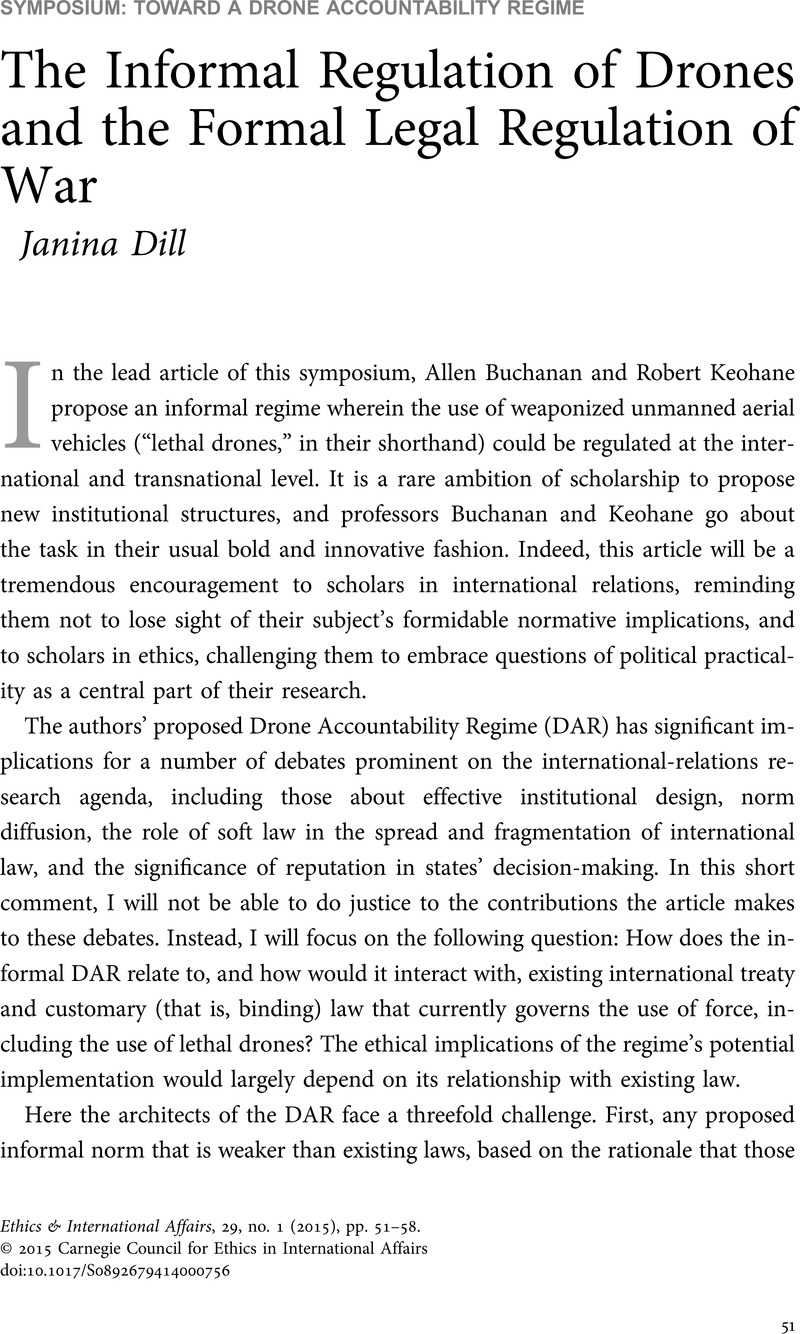Published online by Cambridge University Press: 23 February 2015

1 Military and Paramilitary Activities in and Against Nicaragua (Nicaragua v. United States), Merits, 1986 ICJ Reports, p. 14 (Judgment of June 27, 1986), para. 195; Armed Activities on the Territory of the Congo (Democratic Republic of the Congo v. Uganda), 2005 ICJ Reports, p. 168 (Judgment of December 19, 2005), para. 146; Legal Consequences of the Construction of a Wall in the Occupied Palestinian Territory, 2004 ICJ Reports, p. 136 (Advisory Opinion of July 9, 2004), para. 139.
2 For the panoply of views, see, among others, Akande, Dapo and Liefländer, Thomas, “Clarifying Necessity, Imminence, and Proportionality in the Law of Self-Defence,” American Jounral of International Law 107, no. 3 (2013), pp. 563–70Google Scholar; Deeks, Ashley, “‘Unwilling or Unable’: Toward an Normative Framework for Extra-Territorial Self-Defense,” Virginia Journal of International Law 52, no. 3 (2012)Google Scholar, p. 483; Reinold, Theresa, “State Weakness, Irregular Warfare, and the Right to Self-Defense Post-9/11,” American Journal of International Law 105, no. 2 (2011), pp. 244–86CrossRefGoogle Scholar; Tams, Christian J., “The Use of Force Against Terrorists,” European Journal of International Law 20, no. 2 (2009), pp. 359–97CrossRefGoogle Scholar; Tladi, Dire, “The Nonconsenting Innocent State: The Problem with Bethlehem's Principle 12,” American Journal of International Law 107, no. 3 (2013), pp. 570–76Google Scholar.
3 Hmoud, Mahmoud, “Are New Principles Really Needed? The Potential of the Established Distinction Between Responsibility for Attacks by Nonstate Actors and the Law of Self-Defence,” American Journal of International Law 107, no. 3 (2013)Google Scholar, pp. 576.